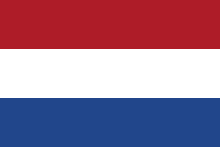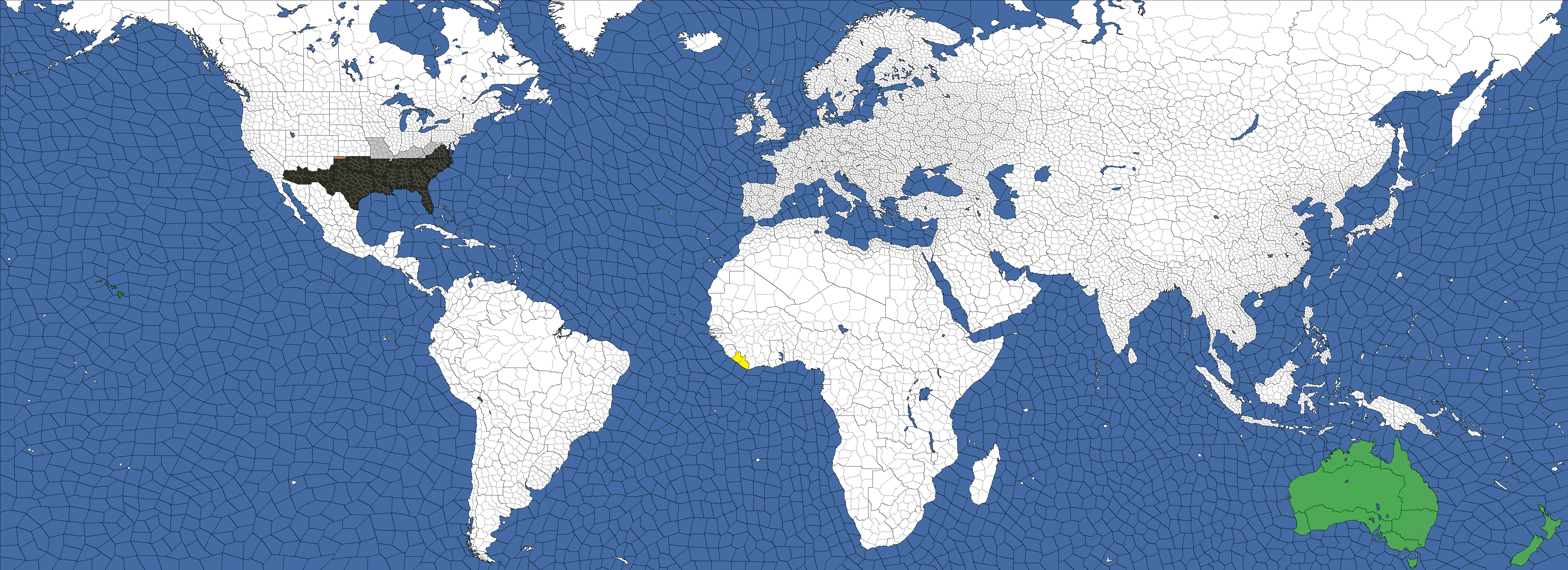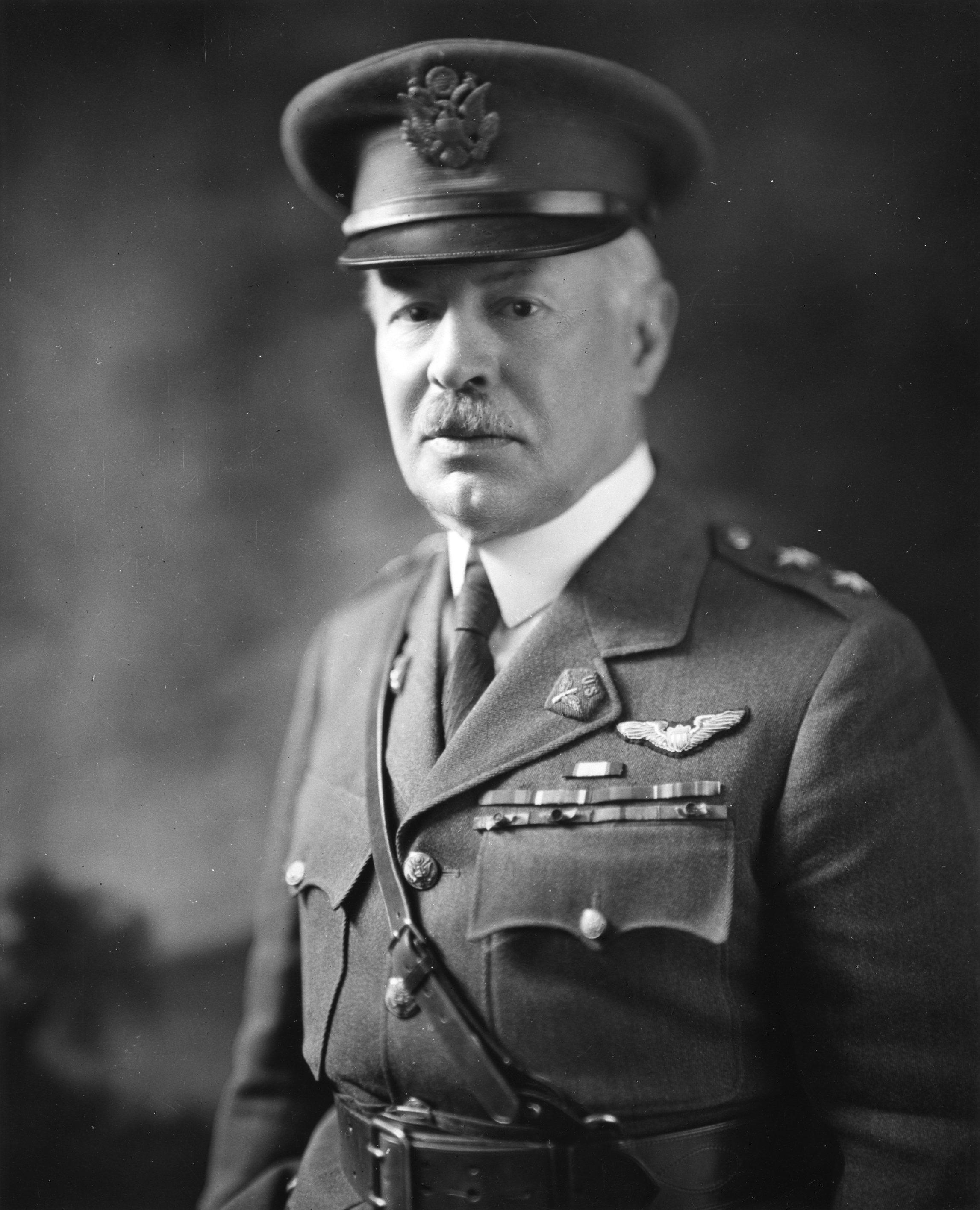Civ'ed
I ain't gotta explain a thing
Hey remember greecemod? while we still worked on that that was actually quite fun, wasn't it?
What if we did that for HOI4?
Everyone's allowed to participate. The most basic form of participation is, of course, to create countries. Everyone can create:
ONE (1) major country (has a National Focus Tree, is an "interesting" nation in the menu selection screen)
TWO (2) regional countries (has a National Focus Tree)
THREE (3) minor countries (use Generic Focus Tree, generic weaponry as well)
What you need to do if you want to make a country is the following:
A name for the country
A set amount of provinces from the following map:

Note that in general, Minor nations are smaller, and Majors can be larger. Feel free to divide provinces up into states, and note your capital province/state on the map.
Flags for the following ideologies:
Democratic, Communist, Extreme Right-Wing
At least a ruling party name.
These are the absolute minimum you need to do.
Politics n stuff
Though I just used the three standard HOI4 ideologies above, the political system is going to be a bit more complex.
Politics can roughly be divided up into three parts - left no elections, elections, right no elections. Each part has, in turn, a total of three ideologies in that part of "government". In general, each of these three will be more inclined to work with others within its "group". Currently they don't really have any subcategories (aka how the vanilla game handles the difference between falangism, nazism, and fascism), which will come into play as the alt-hist kind of takes shape.
From left to right:
National Communism - Real world parties in this organization would include such as the Bolsheviks, Chinese Communist Party under Mao, or Hoxha's Albania.
Permanent Revolutionarism - Trotskyism falls within this group.
Indigenosocialism - policies similar to those of Tito - that socialism cannot be developed in one standard way but varies from country to country.
----
Republicanism - kind of your standard social democrats really
Nationalism - your liberalism and centrism.
Conservatism - exactly what it sayeth on the tin
----
Reactionarism - Militarist governments such as that of Jiang Jieshi, monarchist governments such as Nepal around this time, and similar autocratic states.
Synarchism - Technically kind of like falangism in this sense, but also in the more traditional sense of a "shadowy cabal" controlling the government, be that shadowy cabal religious, corporate or political in nature.
National Corporatism - kind of a very strange mixture of the Charter of Camaro, "normal" Italian fascism, and Apartheid. tread at own risk.
If you want to go into a lot of detail on your country, give each party a leader (and find a portrait!) These can be both real characters fictionalized for the TL or complete fictions using real people photos.
The bare minimum is needing a flag for each three categories, and a name for each category, but you can go even further if you so decided.
Making focuses, Tech parties, armor names, etc.
can be left up to those coding or done yourself. You do you, man.
Further stuff
If you want to do endonym names/party names, go right ahead, but do give the English translations so we can have two possibilities.
The PoD is 1848.
An example: (NOT part of the mod)
The Netherlands



Names for the Netherlands:
National Communism - Union of Dutch Worker's Councils /Unie der Nederlandsche Arbeidersvereenigingen
Perm. Revolutionarism - Dutch Worker's Republic/Nederlandsche Arbeidersrepubliek
Indigenosocialism - Socialist Republic of the Netherlands/Socialistische Republiek der Nederlanden
Republicanism - Republic of the Netherlands/Republiek der Nederlanden
Nationalism - United Kingdom of the Netherlands/Verenigd Koninkrijk der Nederlanden
Conservatism - United Kingdom of the Netherlands/Verenigd Koninkrijk der Nederlanden
Reactionarism - Kingdom of the Netherlands/Koninkrijk der Nederlanden
Synarchism - Republic of the United Provinces/Republiek der Vereenigde Provincieën
National Corporatism - Greater Batavian Dutch State/Groot Bataafsch-Dietsche Staat
Parties for the Netherlands:
NC: Dutch Revolutionary Party/Nederlandsche Revolutionaire Partij (Henk Sneevliet)
PR: Social Democratic Party (Frisian Wing)/Sociaal-Democratische Partij (Friessche Vleugel) (Henriette Holst)
IS: Socialist Party of the Netherlands/Socialistische Partij der Nederlanden (Rudolf Escher)
R: Social Democratic Party (National)/Sociaal-Democratische Partij (Nationaal) (Willem Drees)
N: Dutch National-Liberal Party/ Nederlandsche Nationaal-Liberale Partij (Pieter Gerbrandy)
C: Anti-Revolutionary Coalition/Anti-Revolutionaire Coalitie (Louis Beel)
RE: House Orange-Nassau/Huis Oranje-Nassau (Wilhelmina)
SY: Dutch Republican Front/Nederlansch Republikeinsch Front (Anton Mussert)
NCO: Batavian Coalition/Bataafsche Coalitie (Hendrik Verwoerd)
as you can see doing the bare minimum is very simple.
So with that out of the way, let's get to work!
What if we did that for HOI4?
Everyone's allowed to participate. The most basic form of participation is, of course, to create countries. Everyone can create:
ONE (1) major country (has a National Focus Tree, is an "interesting" nation in the menu selection screen)
TWO (2) regional countries (has a National Focus Tree)
THREE (3) minor countries (use Generic Focus Tree, generic weaponry as well)
What you need to do if you want to make a country is the following:
A name for the country
A set amount of provinces from the following map:

Note that in general, Minor nations are smaller, and Majors can be larger. Feel free to divide provinces up into states, and note your capital province/state on the map.
Flags for the following ideologies:
Democratic, Communist, Extreme Right-Wing
At least a ruling party name.
These are the absolute minimum you need to do.
Politics n stuff
Though I just used the three standard HOI4 ideologies above, the political system is going to be a bit more complex.
Politics can roughly be divided up into three parts - left no elections, elections, right no elections. Each part has, in turn, a total of three ideologies in that part of "government". In general, each of these three will be more inclined to work with others within its "group". Currently they don't really have any subcategories (aka how the vanilla game handles the difference between falangism, nazism, and fascism), which will come into play as the alt-hist kind of takes shape.
From left to right:
National Communism - Real world parties in this organization would include such as the Bolsheviks, Chinese Communist Party under Mao, or Hoxha's Albania.
Permanent Revolutionarism - Trotskyism falls within this group.
Indigenosocialism - policies similar to those of Tito - that socialism cannot be developed in one standard way but varies from country to country.
----
Republicanism - kind of your standard social democrats really
Nationalism - your liberalism and centrism.
Conservatism - exactly what it sayeth on the tin
----
Reactionarism - Militarist governments such as that of Jiang Jieshi, monarchist governments such as Nepal around this time, and similar autocratic states.
Synarchism - Technically kind of like falangism in this sense, but also in the more traditional sense of a "shadowy cabal" controlling the government, be that shadowy cabal religious, corporate or political in nature.
National Corporatism - kind of a very strange mixture of the Charter of Camaro, "normal" Italian fascism, and Apartheid. tread at own risk.
If you want to go into a lot of detail on your country, give each party a leader (and find a portrait!) These can be both real characters fictionalized for the TL or complete fictions using real people photos.
The bare minimum is needing a flag for each three categories, and a name for each category, but you can go even further if you so decided.
Making focuses, Tech parties, armor names, etc.
can be left up to those coding or done yourself. You do you, man.
Further stuff
If you want to do endonym names/party names, go right ahead, but do give the English translations so we can have two possibilities.
The PoD is 1848.
An example: (NOT part of the mod)
The Netherlands



Names for the Netherlands:
National Communism - Union of Dutch Worker's Councils /Unie der Nederlandsche Arbeidersvereenigingen
Perm. Revolutionarism - Dutch Worker's Republic/Nederlandsche Arbeidersrepubliek
Indigenosocialism - Socialist Republic of the Netherlands/Socialistische Republiek der Nederlanden
Republicanism - Republic of the Netherlands/Republiek der Nederlanden
Nationalism - United Kingdom of the Netherlands/Verenigd Koninkrijk der Nederlanden
Conservatism - United Kingdom of the Netherlands/Verenigd Koninkrijk der Nederlanden
Reactionarism - Kingdom of the Netherlands/Koninkrijk der Nederlanden
Synarchism - Republic of the United Provinces/Republiek der Vereenigde Provincieën
National Corporatism - Greater Batavian Dutch State/Groot Bataafsch-Dietsche Staat
Parties for the Netherlands:
NC: Dutch Revolutionary Party/Nederlandsche Revolutionaire Partij (Henk Sneevliet)
PR: Social Democratic Party (Frisian Wing)/Sociaal-Democratische Partij (Friessche Vleugel) (Henriette Holst)
IS: Socialist Party of the Netherlands/Socialistische Partij der Nederlanden (Rudolf Escher)
R: Social Democratic Party (National)/Sociaal-Democratische Partij (Nationaal) (Willem Drees)
N: Dutch National-Liberal Party/ Nederlandsche Nationaal-Liberale Partij (Pieter Gerbrandy)
C: Anti-Revolutionary Coalition/Anti-Revolutionaire Coalitie (Louis Beel)
RE: House Orange-Nassau/Huis Oranje-Nassau (Wilhelmina)
SY: Dutch Republican Front/Nederlansch Republikeinsch Front (Anton Mussert)
NCO: Batavian Coalition/Bataafsche Coalitie (Hendrik Verwoerd)
as you can see doing the bare minimum is very simple.
So with that out of the way, let's get to work!
Last edited:










